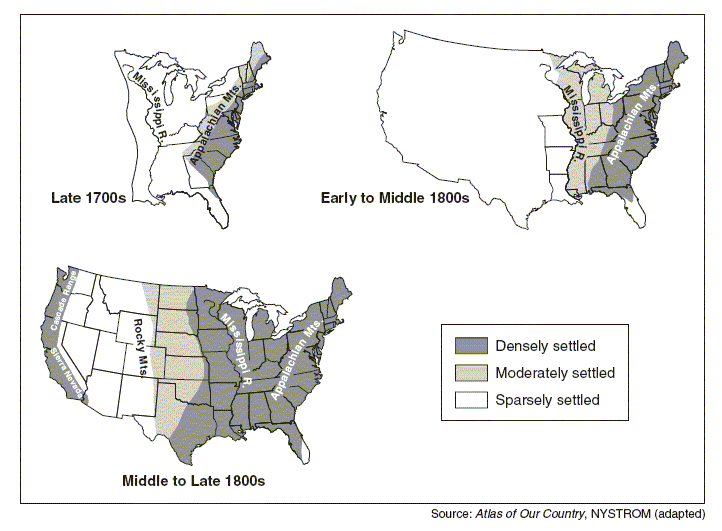Early American Industrialization
 Industrialization,
no matter what benefits it may bring, always causes social and economic
dislocations. Some people gain, others lose, and even some who eventually gain
may feel buffeted by forces over which they have no control. Given this type of
situation, it is not surprising that many groups wanted to "reform" society,
attacking real as well as imagined grievances.
Industrialization,
no matter what benefits it may bring, always causes social and economic
dislocations. Some people gain, others lose, and even some who eventually gain
may feel buffeted by forces over which they have no control. Given this type of
situation, it is not surprising that many groups wanted to "reform" society,
attacking real as well as imagined grievances.
Differences between subsistence and capitalist economic systems:
|
Subsistence Production |
Commercial Production |
- for use-value
- limited in quantity
- family/community based
- directed towards
self-sufficiency
|
- for exchange-value
- open-ended
- individualistic
- directed for capital
accumulation
|
Cultural changes as part of developing market economy:
- Demographic pressures
- Widespread geographic mobility
- Rapid environmental change
- Government support of markets/business
--"transportation revolution"
- Market expansion: geographic & substantive
- Reorganization of work
- Reorganization of the family/ gender roles
- “Progress” vs. “Defense of Liberty”
Resources:
 (See:
History 110)
(See:
History 110)
 (See:
Foundations of U.S. History)
(See:
Foundations of U.S. History)

 Industrialization,
no matter what benefits it may bring, always causes social and economic
dislocations. Some people gain, others lose, and even some who eventually gain
may feel buffeted by forces over which they have no control. Given this type of
situation, it is not surprising that many groups wanted to "reform" society,
attacking real as well as imagined grievances.
Industrialization,
no matter what benefits it may bring, always causes social and economic
dislocations. Some people gain, others lose, and even some who eventually gain
may feel buffeted by forces over which they have no control. Given this type of
situation, it is not surprising that many groups wanted to "reform" society,
attacking real as well as imagined grievances.

